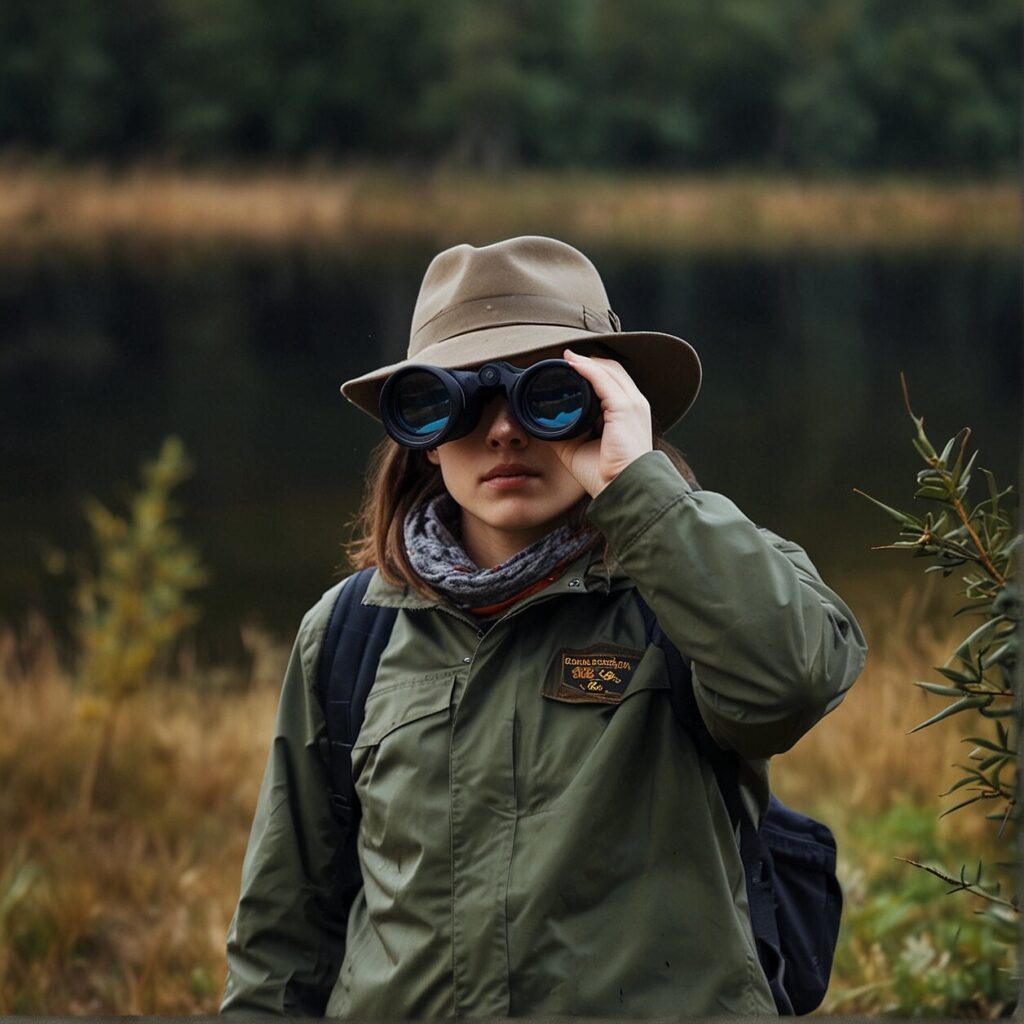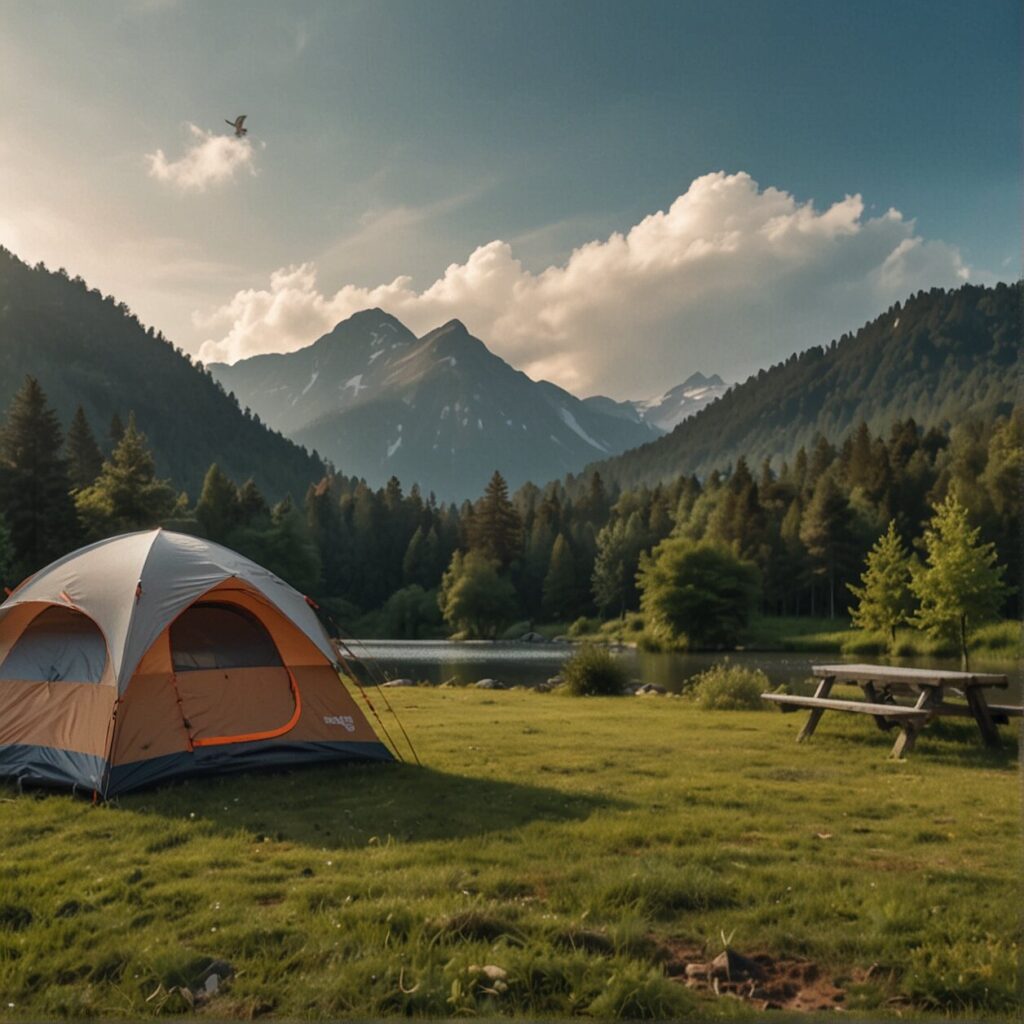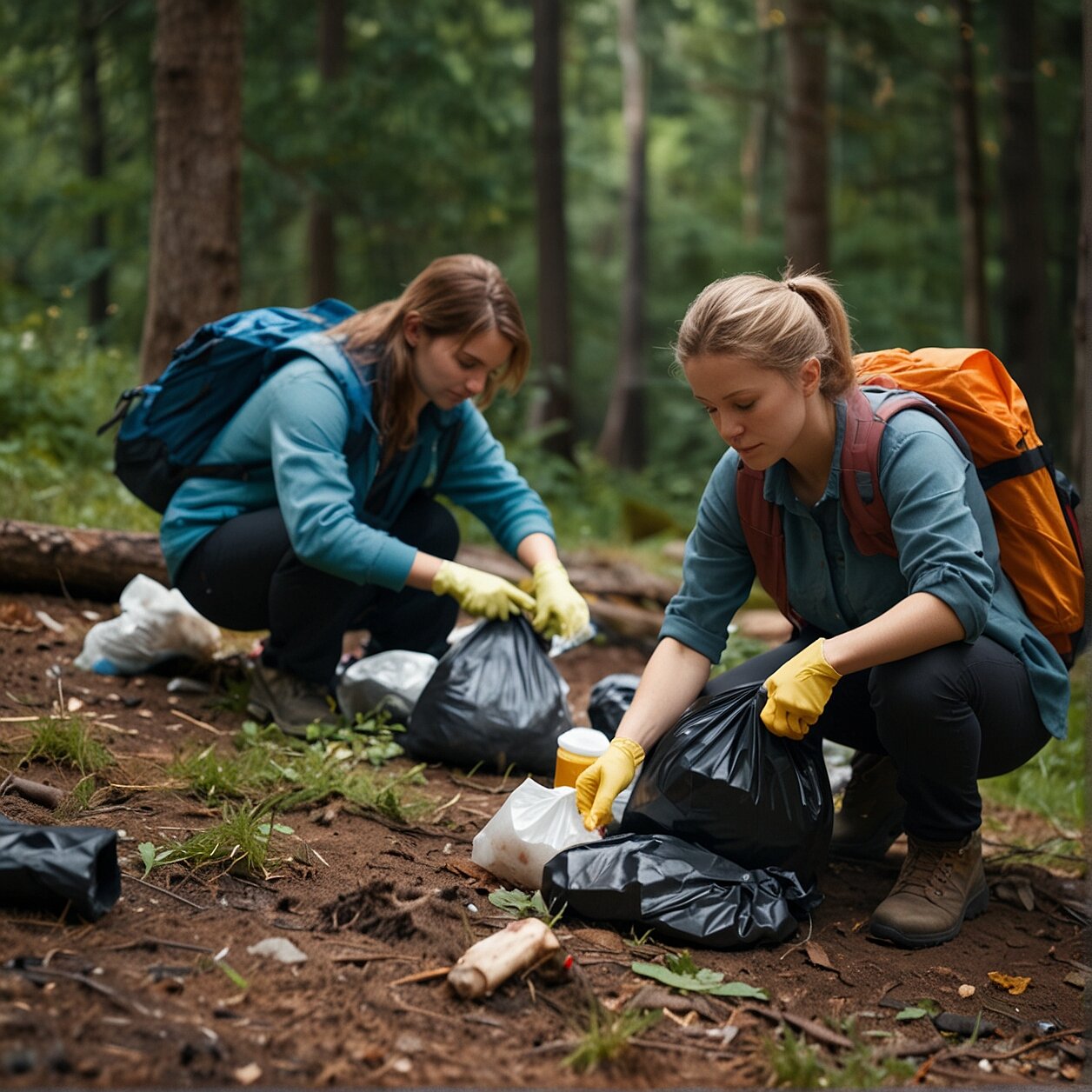How to Leave No Trace When Adventuring in Nature
Imagine standing on a mountainside, soaking in the breathtaking view of the vast wilderness. Or crossing a serene river in the heart of a deeply wooded forest—all without disturbing nature’s delicate balance. This is the essence of the Leave No Trace principles, a set of guidelines designed to help us enjoy the great outdoors responsibly while preserving it for future generations. In this article, we will delve into these principles and show you how to embrace them during your nature explorations.
- Embrace nature: We all love to bask in the serene beauty of the great outdoors. The Leave No Trace principles teach us not merely to observe, but to interact gently—leaving nature as we found it.
- Conserve for tomorrow: These principles help us understand our role as stewards of the environment—ensuring that our children and grandchildren can also relish the gifts of Mother Earth.
- Achieve balance: The natural world and human society can exist in harmony. By following the Leave No Trace principles, we can enjoy our adventures without disrupting the web of life.
“In every walk with nature, one receives far more than he seeks.”—John Muir.
By adhering to Leave No Trace principles in our adventures, we take one step closer to living in harmony with our planet. So let’s delve deeper into the ethos of this movement and learn how we can contribute to its mission.
Understanding the Seven Principles of Leave No Trace
To truly harness the power of Leave No Trace principles, it’s integral for you to have a solid understanding of each one and what they stand for. We’ll delve into each of these seven principles, uncovering their core essence and providing actionable insights on how you can adhere to them.
1. Plan Ahead and Prepare
To minimize your impact on the environment and ensure a safer, more enjoyable trip, it’s essential that you plan ahead and prepare. This could mean researching about the rules and regulations of the place you’re visiting, analyzing the weather and terrain to pack necessary gear, or planning your pathway to reduce erosion.
2. Travel and Camp on Durable Surfaces
Sticking to established trails and campsites protects vegetation and prevents soil erosion. Wherever possible, you should camp at least 200 feet away from lakes and rivers to protect riparian areas.
3. Dispose of Waste Properly
“Pack it in, pack it out” is a familiar mantra to experienced outdoors enthusiasts. All food, waste, and litter should be packed out and disposed of properly in receptacles. In more remote areas, human waste should be properly taken care of to avoid water contamination.
4. Leave What You Find
This principle encourages individuals to appreciate, but avoid disturbing, natural and cultural artifacts. Taking photos, not souvenirs, helps preserve the experience for others to enjoy.
5. Minimize Campfire Impact
Effectively managing campfires to prevent adverse environmental impacts is another vital principle. Making use of a lightweight camp stove for cooking, rather than building a fire, helps protect the natural environment.
6. Respect Wildlife
Observing wildlife from a distance and not feeding them maintains their natural behavior and keeps them safe. Additionally, storing your rations and trash securely can prevent unwelcome visits from wildlife to your campsite.
7. Be Considerate of Other Visitors
Last but not least, behaving in a considerate manner ensures that every visitor can enjoy the beauty of the outdoors. This incorporates simple acts of kindness and respect, like yielding to others on the trail or avoiding loud noises.
By mindfully incorporating these seven principles into your outdoor activities, you are taking a significant step towards preserving our precious wild places for current and future generations to enjoy. Remember, it’s in our hands to take care of nature, as it takes care of us.
Maximizing Enjoyment While Minimizing Impact in Nature
Exploring the great outdoors can be a profoundly enriching experience. Balancing your enjoyment with respect and care for nature isn’t just ethical—it’s also gratifying. By abiding by the principles of Leave No Trace, you not only enjoy nature, but you also ensure it remains pristine for future visitors and generations to come.
So, let’s discuss how you can maximize your enjoyment while reducing your environmental impact.
Firstly, we need to think about our footprint. When camping, hiking, or simply exploring, ensure that you’re not leaving any visible marks. This is where ‘Pack it in, pack it out’ comes into play, a simple ethos that promotes taking all of your waste home with you when you leave.
You may also consider incorporating zero waste practices in your outdoor recreation. Choose products with minimal packaging, bring your own containers and utensils, and don’t forget your reusable water bottle.
Secondly, let’s focus on campfire impacts. Real magic can be felt around a campfire, but it’s essential to minimize harm. Use a camp stove for cooking to reduce firewood scavenging. If you do build a traditional fire, ensure you only use small branches from the ground and keep fires small. Once finished, ensure to extinguish the fire completely and scatter cool ashes.
Maintaining distance from wildlife and observing them from afar is another vital element. While it’s exciting to encounter wild animals, we must remember that we are visitors in their home. This ensures both our safety and the animals’ wellbeing, keeping wildlife wild.
Lastly, being considerate of other visitors keeps the wilderness enjoyable for everyone. Reduce noise, yield to other users on the trail and keep pets controlled or at home – these simple gestures make a sizable impact on creating a rewarding and harmonious environment for all.
Remember, outdoor enjoyment is not just about your singular experience, but also about preserving the natural beauty for all to enjoy. Following the Leave No Trace principles not only provides a deeper connection to nature but also fosters a sense of responsibility and appreciation for the world around us.

Guidelines for Responsible Outdoor Exploration
Embarking on outdoor adventures is thrilling and refreshing, but it calls for an immense responsibility on our part. Your actions can significantly impact nature and its inhabitants. However, we’re fortunate to have a set of guidelines provided by the Leave No Trace Center for Outdoor Ethics which allows us to balance our love for exploration with conservation of the outdoors. Here, we’ll outline these guidelines.
Firstly, knowledge is everything. It’s important for you to know the regulations and special concerns of the area you’ll be exploring. Research ahead, learn about the nature and condition of the trails, potential weather changes, and which areas are off-limits due to restoration or safety reasons. Proper planning ensures not only your safety but also contributes to the wellbeing of wildlife and the preservation of natural resources.
An essential element of responsible exploration is the understanding and practice of camping and travelling on durable surfaces. We need to minimize our impact on the environment wherever we go. Hence, walking and camping on trails and campsites that are designed to withstand impact is a crucial step in reducing environmental harm.
Furthermore, we have the responsibility to dispose of waste properly. This not only includes picking up and packing out our trash and leftover food, but also includes human waste. It’s essential to understand how to handle this waste appropriately to prevent contamination of water sources and disruption of natural habitats.
Little might it seem, alleviating the impact of campfires can make a sizable difference. If you can, opt for a camp stove for cooking rather than making a fire. If a campfire is unavoidable, ensure it’s small, controlled, and fully extinguished before leaving the site.
Always respect wildlife. Observe them from a distance and avoid feeding them as it can disrupt their normal behaviors. Also, comply with all regulations when it comes to pets accompanying you on your adventure.
Lastly, respect each other. Treat fellow outdoor enthusiasts with consideration. Manage your noise levels and respect their privacy. After all, everyone is out there to appreciate the serenity and beauty of nature.
As more of us become captivated by the allure of outdoor adventures, it’s paramount for us to warrant minimal disruption to these treasured natural habitats. Remember, the goal isn’t just to explore, but to contribute to the longevity of these beautiful places for generations to come.
How to Pack It In and Pack It Out: Reducing Litter
So, you’re ready to head out into the great outdoors, right? That’s fantastic! However, remember that keeping these pristine spaces clean is both a responsibility and a necessity. How can you accomplish this? The answer is simple: abide by the principle known as ‘pack it in, pack it out’.
The ‘pack it in, pack it out’ principle urges you, the outdoor adventurer, to remove everything you bring into a natural area. Carry out all trash, leftover food, and litter. But this principle extends beyond the obvious items like snack wrappers and water bottles.
Think about the little things – apple cores, banana peels, orange peels. Yes, they are biodegradable, but if left in the wild, they can disrupt natural habitats as they are not part of the local ecosystem. Animals may become dependent on this foreign food source or it could introduce non-native species, disrupting the balance. So, if you pack it in, make sure you pack it out.
Remember to pack out all toiletries as well. Toilet paper, sanitary napkins, wet wipes, and other hygiene products must not be left behind. They may take a long time to degrade, causing harm to the environment and spoiling the experience for others.
One helpful tip is to repackage food in reusable containers or ziplock bags to minimize waste. Not only does this help to reduce the volume of trash, but it is also more lightweight for your backpack. Bonus points for being eco-friendly!
In essence, the ‘pack it in, pack it out’ principle is all about thinking ahead, making smart choices, and being a responsible outdoor enthusiast. So the next time you set out on an adventure, remember these rules. By doing so, you’re helping to preserve our beautiful natural spaces for future generations to enjoy.

Water Source Protection: Staying Hydrated Responsibly
When adventuring outdoors, hydration is paramount. Yet, how we maintain this crucial element is just as significant from an environmental perspective. Make sure you tread lightly when it’s time to fill up those water bottles.
The first rule is to minimize your impact on water sources. Always keep a respectful distance, ideally 61 meters (200 feet) from streams and lakes when setting up your camp. This helps to protect riparian areas—zones where land and water ecosystems overlap, playing a crucial role in preserving biodiversity.
Here’s a tip for you: utilize smaller streams or rivulets for water collection. Large bodies of water are often home to a diverse array of wildlife; thus, even a minor disturbance could have significant repercussions.
Biodegradable soap is a better option for cleaning, but even its use should be parsed. A small amount goes a long way and water used for cleaning or bathing should be carried at least 200 feet away from water sources to prevent any contamination. Protecting water quality is absolutely critical not just for your health, but also for the well-being of the plants and animals that depend on these water bodies.
Simply put, it’s all about mindful hydration and waste water disposal—a delicate balance between meeting our needs and honoring nature’s requirements. Remember, even the smallest actions contribute massively to preserving the natural world for generations to come.
FAQ’S
We understand that you might have questions about the Leave No Trace principles, and how exactly they can be applied in various scenarios. This section has been created just for that. We’ve made an effort to answer some of the most frequently asked questions to provide further insight into these practices. Let’s delve into the most common queries that come up and help clear any doubts!
What are some tips for responsible outdoor exploration?
Responsible outdoor exploration begins with a focus on nurturing nature. It’s all about you, out there in the wild, leaving only footprints and taking only photos. Here are a few tips to become a more responsible explorer.
Understand and Respect the Rules
First, familiarize yourself with the rules and regulations of the area you will be visiting. This helps in protecting both you and the environment. Ignorance is no excuse for causing damage to valuable ecosystems or for endangering yourself and others.
Stick to the Trails
Trails are made for a reason and straying off the beaten path can disrupt local wildlife and plant life. When you are traveling or camping, always do so on durable surfaces to minimize your impact, as per the second Leave No Trace principle.
Properly Manage Your Waste
Remember, everything you take into the outdoors must come out with you, including your trash. Dispose of waste properly, and always consider the impact that it could have on the environment.
Respect the Wildlife
Remember that you’re a visitor in their home. Be mindful to observe and photograph wildlife from a distance. Avoid feeding wild animals as it changes their natural behavior and makes them dependent on humans.
Minimize Your Noise
Nature should be a place of peace and tranquility for everyone, including the wildlife. Keep the noise down, especially at night when many animals are most active.
Be Considerate of Others
Fellow explorers deserve quiet enjoyment of the outdoors too. Keep your pets on leashes where required, and yield to other hikers on the trail.
By keeping these guidelines in mind, you’ll help preserve the integrity of the outdoors for generations to come. Happy exploring!
What are the benefits of following Leave No Trace principles?
Indeed, the benefits of adhering to Leave No Trace (LNT) principles are multifold. Primarily, by following these principles, you contribute to the conservation of nature’s beauty and resources. Keeping the natural environment intact is a gift to numerous generations in the future, enabling them to explore and enjoy the outdoors just as we do.
Moreover, sound application of LNT principles leads to a better outdoor experiences for everyone involved. Imagine embarking on a hike and encountering trash littered along the trail, or an abused campsite. It’s not just unsightly; it breaks the illusion of venturing into the unspoiled wild. When everyone exercises the courtesy to tidy up after themselves and respect the land, every adventurer gets to fully immerse themselves in the wonder of the great outdoors.
Following Leave No Trace principles also promotes a positive culture of respect and responsibility among outdoor enthusiasts. It fosters a community where everyone understands the importance of taking care of the natural environment and encourages others to do the same.
Last but not least, adhering to these principles helps protect wildlife. By keeping a safe distance, you avoid disturbing animals in their natural habitat and prevent unfortunate encounters. Respect for wildlife is crucial for their survival and our safety.
In a broader context, following the LNT ethic actually neutralizes our environmental footprint, making us better stewards of the planet. It’s a simple yet powerful way we can all make a difference.
How can I apply Leave No Trace principles in my everyday life?
Absolutely! Let’s start by acknowledging that while practicing the Leave No Trace (LNT) principles is often associated with outdoor adventures, they can indeed be woven into our daily lives in meaningful ways. So, let’s find out how you can make an environmental difference right at home, shall we?
Paring Down Consumption
Reduce your need for things by being a mindful consumer. Minimizing your environmental footprint starts with recognizing the impact of the things you buy. Ask yourself: Do I really need this? Can I find a second-hand alternative? Little practices like these help to minimize waste whilst also saving you money.
Proactive Recycling and Composting
Proper waste management is a huge part of LNT. Be mindful of where your trash goes. Consider setting up home composting for kitchen scraps, and make sure you know your local recycling rules to maximize the amount of items you can divert from the landfill.
Respecting Wildlife in Your Community
The sixth principle—respect wildlife—is equally applicable at home. Remember not to feed or harass local animals. Not only does this serve to protect them, but it can also keep your local ecosystem healthy and balanced. Secure your trash so it doesn’t attract wildlife and become a potential hazard.
Conserving Energy and Water
Simple yet effective, the practice of conserving resources at home is a powerful way to ‘Leave No Trace’. Turn off lights when you leave a room, and unplug devices when they’re not in use. Be mindful of your water usage too. Fixing leaks right away can save a surprising amount of water over time.
Supporting Leave No Trace Initiatives
Another way is by supporting The Leave No Trace Center for Outdoor Ethics, or other similar initiatives, in their mission to promote responsible outdoor behavior. This can take the form of donations, volunteering, or simply by spreading the word about the importance of these principles to those around you.
In applying these principles to your everyday life, you’re not just reducing your environmental impact but also creating healthier communities and a more sustainable world. The Leave No Trace principles are truly a guide that goes beyond the trail and deep into the heart of our daily living.
How to pack for a trip while adhering to Leave No Trace principles?
When packing for an outdoor trip, you not only need to think about what you’re bringing, but also about what you’re leaving behind. The art of packing begins with the fundamental maxim: ‘Take only pictures, leave only footprints’.
Begin with the essentials. Any adventure, no matter how remote, requires basic gear such as maps, a compass, first-aid supplies, and a weather-prepared clothing system. But equally as important is your commitment to the Leave No Trace (LNT) principles. Here are a few ways to ensure your packing strategy aligns with these principles.
Consider your gear’s environmental impact
Pack equipment with minimal packaging and avoid gear/items that could unintentionally end up as litter such as micro-trash. Additionally, use bio-degradable soap and avoid aerosols or other items that might contribute to localized pollution.
Limit disposable item usage
Try to avoid packing disposable items such as plastic bags, wrappers or aluminium foil, which can easily turn into waste. Instead, use resealable containers, and pack bulk food items to minimize litter potential.
Consider your meal planning
Plan meals to have minimal waste. Remember, what comes in with you has to come back out, including food scraps. Pack adequate food storage to safeguard your meals from wildlife, and carry enough garbage bags to pack out your leftovers. Also, in line with LNT principles, consider using a camp stove to cook your meals, reducing the need for open fires.
Remember, LNT is not just about minimizing your impact during your trip, but starts right from the planning stage. So, when it comes to packing, think through what you bring, how you can recycle or reuse items, and ultimately, leave nature as pristine as you found it. Not only does this help protect our precious natural resources, but it also enhances your outdoor experience.
What is the best way to dispose of waste while adventuring in nature?
When exploring the great outdoors, proper waste disposal is crucial and the “pack it in, pack it out” motto is one you should live by. This philosophy emphasizes the need to carry out of the outdoors any trash or leftover food you might produce during your trip and to leave natural areas as clean as or cleaner than you found them.
As you might be far out in nature, a place where there usually aren’t trash cans or recycling bins, packing it all out can pose a challenge. Therefore, it is crucial to plan your pack in a way that maintains room for waste. Bring along refuse bags – they’re light, occupy little space and will serve as your portable trash and recycling bins during your adventure.
There’s more to the story when it comes to human waste. Despite its lack of glamour, it’s an important part of adhering to the Leave No Trace principles. You’ll want to dig catholes, which are pits that are 6 to 8 inches deep. Bearing in mind the proximity to water sources, these should be at least 200 feet away from any water source, camp, or trail to protect water quality. After use, the hole should be covered and disguised with natural materials. For those more challenging environments where digging a hole might not be possible, there are portable waste disposal systems available that are lightweight and sanitary.
One last note about soaps and cleansing agents. If they’re needed, it’s recommended to use small amounts of biodegradable soap. Whether you’re cleaning yourself or washing dishes, carry the water at least 200 feet away from any lake or stream. Doing so helps preserve the quality of the water sources for both people and wildlife.
Altogether, these practices form an effective method for managing waste that allows everyone to do their part in protecting and preserving our natural environments. By utilizing these techniques, you fulfil the aim of the Leave No Trace principle to dispose of waste properly – preserving nature for future enjoyment.







